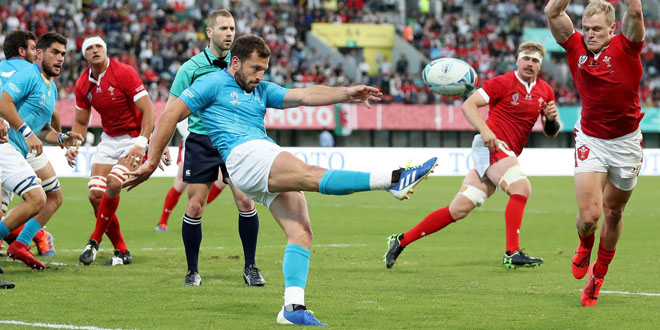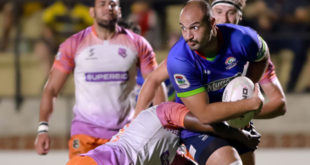RWC 2019 saw full stadiums. The tournament is estimated to have had a total revenue of US$6.44 billion. However, at the same time, the costs of preparing for the tournament also bankrupted USA Rugby.
Rugby needs increased financial power, something that Pichot has made no secret during his campaigning. The sport has the Rugby Championship and the Six Nations unions as its powers. This is no theory, but a reality made on the ten unions each having three votes on the World Rugby Council; more individual power than all other individual members.
The annual Six Nations and Rugby Championship competitions are financially successfully. They are the primary source of gate revenue for all ten participants. For the unions, looking after these competitions is therefore top priority.
I have no argument with doing so. Any businessperson would act to similarly convert their product into the financial might that these competitions happen to be. World Rugby’s duty in this regard is to work around the competitions, to ensure a quality product. While it cannot oversee promotion and relegation into the Six Nations, it can see that Georgia receive more opportunities than at present.
I recently looked over all of the matches played by each of the captains at RWC 2019. I specifically looked at their matches against Tier 2 opponents, eliminating matches at RWCs and RWC qualifiers. The results were expected. Pablo Matera has been capped against Brazil, Chile, Georgia and Uruguay. He was third overall behind Alun Wyn Jones and Sergio Parisse who each had played against five Tier 2 opponents outside of RWCs. The bottom three were Michael Hooper, Siya Kolisi and Kieran Read each with two Tier 2 opponents.
Kolisi has 50 caps, Matera 66, Hooper 99 and Read 127. In other words, there is no correlation between total caps and Tier 2 opposition. Indeed, Alun Wyn Jones and Sergio Parisse have 147 and 142 caps respectively. The numbers confirm that Tier 1 teams play a lot against each other but rarely play against Tier 2 teams outside of RWCs.
Jones has 17 caps against Australia, 19 against South Africa, 15 against New Zealand and 8 against Argentina. In comparison he has one cap against Georgia, that being the RWC 2019 pool match. He has no caps against a European team that is not a member of the Six Nations.
Parisse faced Spain and Romania in 2002; Georgia in 2003; and Portugal and Russia in 2006. These matches were RWC qualifiers. Unlike the existing set-up, for the RWC 2003 and 2007 tournaments, only Quarter Finalists from the prior RWC were automatic qualifiers. From RWC 2011-2023 the top three per pool have qualified directly. The rule change saw Italy not playing further against non-Six Nations sides from Europe until 2018. It changed with Italy hosting Georgia and Russia in these years.
The numbers for Hooper and Read are much the same. In other words, there is a clear pattern of restricted Tier 1 vs Tier 2 matches. This is a contrast to the structure of the RWC, which is a 20-team competition involving four pools of five.
In competing terms what differentiates RWCs from other years is Tier 2 opportunities. Samoa faced Ireland and Scotland at RWC 2019 in Pool A, while Uruguay faced Australia and Wales in Pool D.
There was an attendance of 27,317 for Uruguay vs Wales in Kumamoto. The city only hosted one other match, that being France vs Tonga. It was another Tier 1 vs Tier 2 match and was also close to capacity with an attendance of 28,477.
The all-time record attendance for a RWC was not New Zealand vs England in Yokohama, nor was it France vs Argentina in Paris. Instead it was Ireland vs Romania at London’s Wembley Stadium. A RWC record crowd of 89,019 attended that match; a quintessential Tier 1 vs Tier 2 encounter.
These attendance examples respond to the question of whether there is a market for expansion or not. The task is to market matches outside of RWCs. Or, put differently, rugby needs to create a market based on the available product, by offering more opportunities. This does not mean that the Six Nations needs to be pulled down nor that it needs to be expanded.
How then can rugby boom its markets outside of RWC? My proposal is to do so without overreaching change. Instead, I would table a proposal to put the RWC pool model into practice for general competition.
Pool C of RWC 2019 had a 3-2 split between the tiers. That being Argentina, England and France as Tier 1 and Tonga and the USA as Tier 2. The match schedules was thereby two Tier two matches for Argentina, England and France.
For Tonga and the USA this was unheard of; three Tier one opponents back-to-back before their final hit-out against each other in Osaka. No such fixture list has ever existed outside of RWCs for Tonga or the USA. Never.
What if World Rugby could sign-off a new fixture arrangement? What if the July (formerly June) and November international windows could become four matches per competitor with each team playing against two Tier 1 and two Tier 2 opponents? Make the matches meaningful by having them be more than friendlies. Hence, work towards a Grand Prix Final. This is the task – do it without depriving some Tier 2 teams with Tier 1 matches as had been criticized under the proposed Nations Championship.
At present international windows schedule three matches per competitor, though some teams schedule a fourth for financial purposes. With four Ireland could play two tests in Australia and two in Japan in a July tour. In November, South Africa could play away to Georgia, Ireland and Wales and face Japan in Brighton. The model is simple and, importantly, it is viable. So, how be it?
 Americas Rugby News Rugby news from across the Americas!
Americas Rugby News Rugby news from across the Americas!




